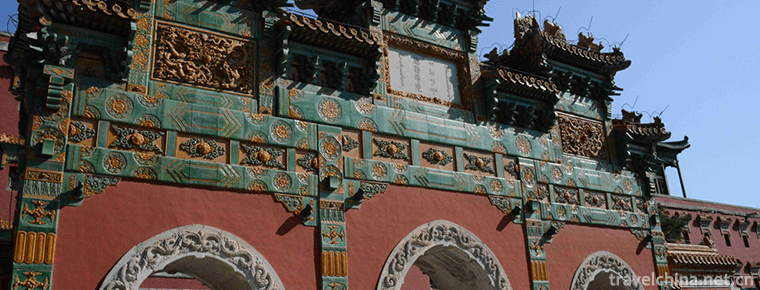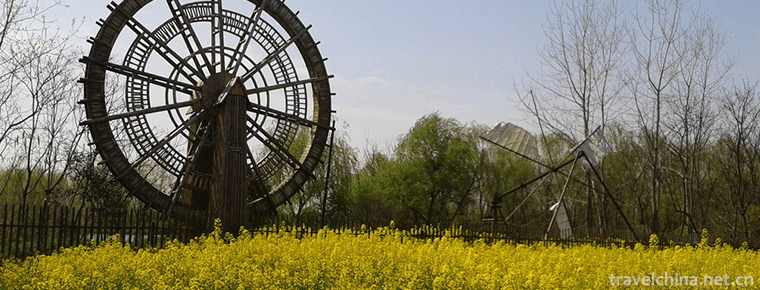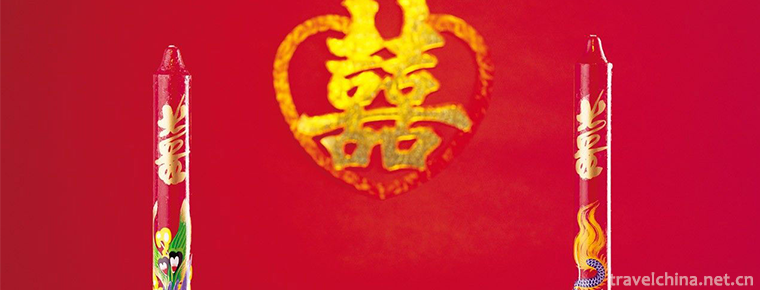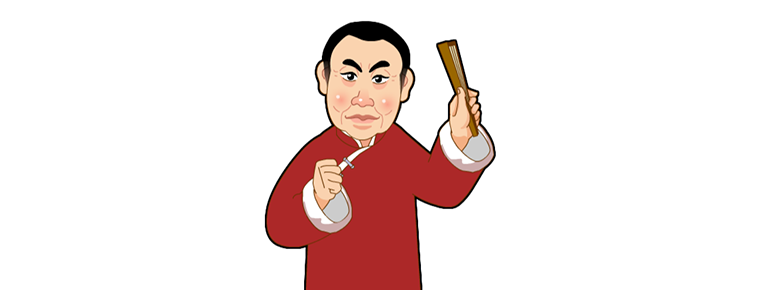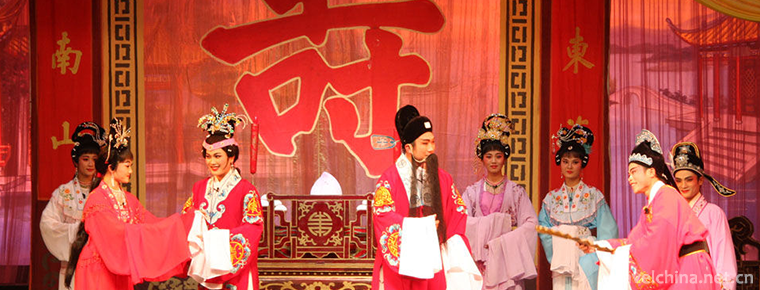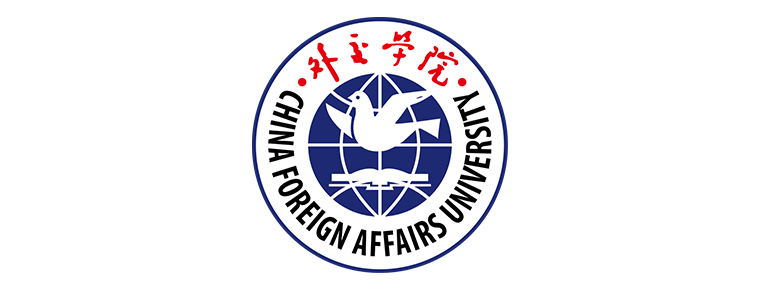Cross talk
Cross talk
Crosstalk is a folk art of rap and singing. It takes the form of speaking, learning, teasing and singing to highlight its characteristics. Famous cross talk performers include Zhang Shouchen, Ma Sanli, Hou Baolin, Liu Baorui, Ma Ji, Hou Yaowen, Su Wenmao and Guo Degang.
There are three origins of cross talk in China: Beijing Tianqiao, Tianjin Quanye and Nanjing Confucius Temple. Crosstalk art originated in North China, prevailed in Beijing, Tianjin and Hebei, spread throughout the country and at home and abroad, began in the Ming and Qing Dynasties and flourished in the contemporary era. They mainly perform orally, mainly in Beijing dialect. The main roads include folding fans, handkerchiefs and waking wood. Performing forms include single-mouth crosstalk, counterpart crosstalk and group crosstalk. They are folk-rooted, life-based and popular forms of performing arts.
In December 2018, the General Office of the Ministry of Education announced Tianjin Normal University as a base for the inheritance of cross talk Chinese excellent traditional culture.
Orion of the Name
Crosstalk has three origins: Beijing Tianqiao, Tianjin Quyechang and Nanjing Confucius Temple. It is generally believed that it was formed in Xianfeng and Tongzhi years of Qing Dynasty. It is a form of opera that causes laughter in the audience by telling jokes or funny questions and answers. It evolved from the Song Dynasty's "Xiangsheng". By the late Qing Dynasty, cross talk had become a modern feature and style. It is mainly spoken in Beijing dialect, and "dialectal crosstalk" is also spoken in local dialects. In the process of cross talk formation, we have absorbed the artistic merits of oral skills and storytelling extensively, embodying solemnity and harmony, expressing truth, goodness and beauty with satirical jokes, making people laugh as the artistic characteristics, and taking "speaking, learning, teasing and singing" as the main artistic means. There are three kinds of performances: single-mouth, counterpart and group-mouth. Single crosstalk is performed by one actor and tells jokes; pair crosstalk is performed by two actors, usually by two kinds of actors, namely "one head is heavy" and "mother and son" and "group crosstalk" is also called "group livelihood" and is performed by more than three actors. Traditional songs mainly satirize various ugly phenomena in the old society and reflect various life phenomena through humorous narration. After liberation, besides continuing to carry forward satirical traditions, there are also works eulogizing new people and new things. Traditional repertoires include "Guangong Wars Qinqiong", "Drama and Dialect", "Jia Xingjia", "Picking Horse Coat" and so on. The total number is more than 200. The works reflecting real life are more influenced by Night Travel, Buying Monkeys and Hat Factory.
Crosstalk is a form of folk art that causes laughter in the audience by jokes, funny questions and answers, and rap. The audience laughed with jokes, funny questions and answers, and rap. It's mostly used for satire, and now it's also used to celebrate new people and new things. According to the number of people, they can be divided into cross talk, single cross talk, group cross talk and cross talk drama.
English translation of cross talk or comic cross-talk, TALKSHOW talk show, or CHINESE COMIC DIALOUGE, one of the forms of opera, with witty words, in order to achieve the purpose of making people laugh and entertain people, its earliest form is derived from the miscellaneous drama of "Haiyou".
History of Development
Early development
Crosstalk, an ancient image sound, originally refers to the imitation of others, also known as cross talk next door. Folk rap and singing art in North China has further evolved and developed. It has been formed by imitating oral skills and other forms of folk art. It is generally believed that it was formed during the Qing and Xianfeng and Tongzhi years. A form of opera in which jokes or funny questions and answers cause laughter in the audience. In the early years of the Republic of China, Xiangsheng gradually developed from a person's imitation of oral skills to a single joke, and its name changed to cross talk. Later, it gradually developed into mono-cross talk, counterpart cross talk and group cross talk, and integrated into a veritable cross talk. After years of development, cross talk has finally become the most popular form of cross talk among audiences.
In the late Qing Dynasty, cross talk formed modern features and styles. Mainly in Beijing dialect, there are "dialect crosstalk" everywhere.
In the process of cross talk formation, we widely absorb the artistic merits of oral skills and storytelling, embody solemnity and harmony, express truth, goodness and beauty with satirical jokes, and make people laugh as artistic characteristics; and take "speaking, learning, teasing and singing" as the main artistic means.
representative figure
Zhang Sanlu is one of the earliest cross talk artists in modern society. According to the relevant records and speculation: Zhang Sanluben is an octagonal drum clown artist, later changed to cross talk. His artistic career began in the Daoguang period of the Qing Dynasty. In the book of the sons of Suiyuan Yue, he said, "Learning cross talk is like returning to the soul of Zhang Sanlu. Copper mules are better than three to live."
Zhu Shaowen (1829-1904), the grandfather of cross talk. The artistic name is poor and fearless. He is a flag-bearer of the Han Army, whose ancestral home is Shaoxing, Zhejiang Province. On the bamboo slab of his performance, which hit the beat, he inscribed the words "full of articles, not afraid, and the history of Wuche books falls to the ground poor".
During the Anti-Japanese War, some cross talk actors showed national integrity. Chang Baokun was arrested twice for satirizing the Japanese government. Zhang Shouchen publicly praised Ji Hongchang and others for their resistance to Japan and criticized the non-resistance policy of the authorities. He also had trouble satirizing the "base" of the Tianjin police at that time.
Performing Form
In narrative art, it is composed of a penetrating plot, a closed structure with a head and tail and linear development, which allows no external interference. In theatrical art, there is a fourth wall theory. It requires a hypothetical wall between the actor and the audience, which makes the communication between the actor and the audience indirect.
The art of cross talk is different. The "plot" in cross talk is intermittent and absent. Therefore, the content of cross talk makes people feel uncertain. The burden of cross talk often gives the audience a false impression and hides the truth. In this way, the audience will be encouraged to think on their own initiative, thus strengthening the exchange of ideas between the two sides. In contrast, reviewers (and other performers) not only explain the cause and effect of the event clearly, but also pre-define the theme and the end of the story by winning the first time, so the audience only needs to accept it passively. In cross talk performances, actors no longer enjoy the status of "storyteller" as commentators. Actors and actors, actors and audiences all appear as equal interlocutors. They can express their different opinions on things. This kind of different opinions from many aspects not only constitutes the formal characteristics of cross talk, but also is the source of comic contradictions in cross talk. Here, the actor's every speech and conversation must be strictly tested by another actor and the audience. His mysterious, self-contradictory, absurd and exaggerated words can not escape the audience's ears. He is often laughed at for "showing his ugliness" and is in the "embarrassment" of "not coming out of the stage". Situation. Audiences feel their psychological advantages through laughter, and receive subtle education in laughter. The appreciation process of cross talk can better realize the purpose of "teaching in music", so cross talk art is welcomed by the masses.
Crosstalk performances take a direct audience-oriented approach, and "the fourth wall" does not exist in crosstalk performances. Many actors also directly ask questions to the audience, or answer questions raised by the audience, and meet the audience's requirements. In this way, it greatly strengthens the connection and communication between actors and audiences.
In the process of enjoying cross talk, the audience can express their opinions and attitudes through laughter, although they can not directly talk with the actors. In addition, in many cross talks, the words of the cheering actors often represent the views of the audience, and the cheering actors often act as the spokespersons of the audience and engage in dialogue with the teasing actors.
From the above analysis, we can see that in the process of cross talk performance and appreciation, the communication between actors and audiences is bidirectional and very close. This characteristic is inseparable from its unique artistic form, the form of dialogue. This form satisfies the audience's sense of participation, and thus produces a unique artistic charm. Crosstalk has become a friend of the audience, which absorbs wisdom and humour from the masses, expresses the people's pursuit of truth, goodness and beauty and optimism, and exposes and satirizes the false and ugly in life. Crosstalk, full of life content and unique art form, has become the flower of excellent national art.
There are two ways of cross talk performance at first, namely "dark spring" in curtain performance and "bright spring" in public performance. After three years of Xuantong in the Qing Dynasty (1911), only one kind of "Mingchun" continued to develop. The forms of cross talk are divided into three types: single cross talk, counterpart cross talk and group cross talk. Crosstalk is a long joke performed by an actor. Crosstalk is performed by two actors. Narrator A is called "teasing" and assistant dialogue B is called "praising". When performing, according to the difference between the weight of the content and the language style, it can be divided into three categories: one head heavy, one mother and one son and one mouth through. Crosstalk is performed jointly by more than three actors. A is called "teasing", B is called "holding up" and C is called "greasy seam".
A cross talk is generally composed of four parts: an impromptu opening remark, a transitional introduction to the text, a lively one, and a bottom one, which is the end of the climax. After the founding of the People's Republic of China, the new crosstalk often omitted the "ladle handle". Crosstalk uses artistic techniques to form "burdens", in which people laugh by "shaking" their watches. Its tactics include: three times (turn) four shakes, praise first and then derogation, error between yin and yang, pun, self-contradictory, inconsistent in appearance, distorted interpretation, violation of conventions and so on. Each cross talk usually contains more than four or five funny and humorous "burdens".
Artistic Characteristics
Performing Skills
When talking about the basic concept of cross talk, Ma Ji, a famous cross talk artist, pointed out that: "(cross talk) is the art of making people laugh by organizing a series of unique"burdens". The burdens referred to here are the burdens of language art, and the language referred to here is the language of the burdens of art... The three elements of cross talk art are burdens and laughter, and they are indispensable. (Quyi, No. 2, 1987, is quoted from Ma Ji's "Looking Back in Thirty Years and Speaking Up Quickly". Among the three elements listed by him, language and laughter are also possessed by other comedy arts. Only the burden is unique to cross talk art. Burdens play an important role in cross talk art. Therefore, the analysis of the content and form of the burden is the key to our study of cross talk art.
The word "burden" is a figurative metaphor, which actually refers to the brewing and development of comic contradictions in cross talk. The so-called "three turns and four shakes" is the common structure of cross talk burden. Among them, "three turns" refers to the repeated rendering and emphasizing of contradiction illusion; and "four shakes" refers to revealing the truth of contradiction after three turns. The feature of comedy contradiction is to "cover up one's essence with another essential illusion" (quoted from Marx's Introduction, Volume 1, Page 5 of the Complete Works of Man and Engels). Therefore, there are many kinds of illusions in comedy contradiction. In fact, the illusion is also a phenomenon. Its characteristic is that it can show the opposite (or deviating) nature of water. However, the illusion reflects the essence deeply in its unique way. Therefore, the real comic contradiction has the characteristics of unexpected and reasonable. In cross talk, the comic contradiction - the burden of both sides (phenomena and essence, etc.) is held separately by the laughing parties, and the contradiction is gradually exposed through dialogue. Comedy artistic techniques (such as exaggeration, misunderstanding, coincidence, etc.) are widely used in various comedy arts, not unique to cross talk. However, crosstalk has its own characteristics in using these techniques. For example, many dramas and movies use visual images to form misunderstandings (there are two cool-looking people in the movies "The Great Dictator" and "Black Tulip"), while crosstalk mostly relies on dialogue in the use of misunderstanding techniques. For example, when Gong Yunfu, an artist, changed to sell vegetables, he said, "It hurts to pick one off and touch his shoulder. He remembered the cries of Meet the Queen:'Ah, bitter wow!'The old lady said,"Oh, the cucumber is bitter, don't go!" Obviously, this burden adopts the method of misunderstanding, which is caused by the dialogue between the characters. Without both sides of the dialogue, there will be no misunderstanding.
To organize the burden through dialogue is the most frequently used and most important method in cross talk. This is true not only in the cross talk of "mother-son" type, but also in the cross talk of "one head sinks". This is true not only in cross talk, but also in single cross talk. For example, in "Pearl Jade and White Jade Soup", the burden accumulated is composed of the dialogue between Emperor Zhu Yuanzhang and his ministers. This kind of burden made up of dialogue can be found everywhere in crosstalk works and can be enumerated.
Dialogue is not only reflected in the burden of organizational methods, but also in the use of various cross talk artistic means. "Saying" is the four most basic artistic means of cross talk. "Saying" is joke and tongue twister. "Learning" is to imitate all kinds of salesmen, singing and the language of all kinds of characters, as well as imitating local operas. "Funny" is to catch and laugh, "singing" refers to singing Taiping lyrics. The use of these artistic means is consistent with the artistic law of cross talk creation only if it is included in the scope of dialogue.
Continental Crosstalk
Crosstalk in the North (Beijing dialect)
After 1949, a large number of cross talk performers, represented by Ma Sanli, Hou Baolin and Liu Baorui, gradually transformed the content of cross talk before the founding of the Communist Party of China, removing a large number of pornographic and sarcastic passages about other people's physiological defects. Crosstalk has become a nationwide and nationwide form of folk art. One reason for the popularity of cross talk is that it is a sound-based art, suitable for the popular radio as the main media. Crosstalk is called "light cavalry on the literary and artistic front". In addition to reorganizing the traditional cross talk, there were many ironic cross talks in the early stage, satirizing the "old society" or the people with backward ideas in the new era. During the general line period of 1958, a large number of eulogistic cross talk began to appear. During this period, Ma Ji and other representatives.
After 1976, cross talk became popular rapidly. A large number of ironic crosstalk of the Gang of Four, represented by Yang Zhenhua, Jin Bingzhang's "Fake Sky", Jiang Kun and Li Wenhua's "Such Photographs" and Chang Baohua and Chang Guitian's "Hat Factory", became popular rapidly. Formerly, crosstalk between Hou Baolin and others was broadcast on radio again.
In the 1980s, under the impact of sketches, cross talk with simple performances no longer attracted the attention of audiences who used television as the main media. Some new forms of cross talk, such as playing and singing cross talk, cross talk drama and so on, have developed, but the market is still small (at the same time, a large number of cross talk elements are absorbed into sketches). Nevertheless, cross talk has made considerable progress during this period: a new generation of actors have emerged, new cross talk segments in various contents and forms have stepped on the stage, forming a "contemporary cross talk" different from the previous one. Among them, there are many popular examples both in praise of entertainment and in criticism of current disadvantages. Crosstalk was still the main entertainment for the public in various literary and artistic occasions during this period.
Since the mid and late 1990s, cross talk has gradually declined, new passages are becoming less and less popular, and the old-fashioned pure entertainment style cross talk has gradually occupied the absolute mainstream position. At the same time, cross talk performers, including many well-known actors, have left the stage for other jobs, but few of the newcomers can take over. The status of cross talk has gradually been replaced by prosperous sketches.
At the beginning of the 21st century, cross talk in mainland China is in a situation of green and yellow: the older generation of artists have fallen, the popular actors in the 1980s have also shown their inadequacy for the development of cross talk; in the "National Cross Talk Competition" held to revive cross talk, the new generation has not been flourishing. China Central Television held four national cross talk contests on New Year's Day in 2002, New Year's Day in 2003, National Day in 2006 and May Day Golden Week in 2008. The first and second crosstalk contests were highly praised by the audience, while the third and fourth crosstalk contests were referred to as "crosstalk contests without crosstalk".
The future of cross talk is not appreciated by most people, but outside the media, many traditional cross talk troupes have retained a certain level and a considerable audience. Many small theatres and teahouses in Tianjin can hear quite splendid traditional cross talk. Guo Degang, who also performed in the traditional way of teahouse, suddenly became popular after 2005. Although different from the mainstream cross talk, he still brought some recognition of the tradition to the audience.
Crosstalk in the South (Cantonese)
Cantonese crosstalk can be traced back to the 1930s and 1940s at the earliest, but it is generally believed that Cantonese crosstalk began in the early 1950s.
There is less debate about the origin of Cantonese cross talk. However, it is generally believed that the Cantonese cross talk is gradually developed by Huang Junying after learning from the Northern Cross talk.
Cantonese cross talk began to flourish around the 1990s. From the early 1990s to the beginning of the new century, Huang Junying and Yang Da are the most well-known partners in Cantonese cross talk. Before that, the more well-known Cantonese crosstalk performers were Lin Zhaoming and Zhang Yuekai. Later Cantonese crosstalk performers include He Baowen and Chen Jianxiong.
Cantonese cross talk is mainly about life, Cantonese culture, language dialect, etc. It is close to the public and has developed to modern times. There are a large number of supporters in Cantonese area, even affecting a generation of young people whose mother tongue is Cantonese.
Like the Northern Cross talk, Cantonese cross talk also appears to be out of touch. But since May 2016, Cantonese cross talk imitated the "Deyun Society" staging performance and created a platform called "Ming Xintang", which has achieved good results in re-establishing the status of Cantonese cross talk.
Taiwan Crosstalk
In 1949, the Kuomintang government withdrew from Taiwan, and a number of cross talk actors also came to Taiwan. In that year, Wei Longhao (Wei Su) and Wu Zhaonan met and hosted cross talk programs on China Broadcasting Corporation, Police Radio and other radio stations. Since 1967, we began to collect data to make cross talk collection, cross talk selection, cross talk catching anecdotes and cross talk picking up spikes.
Initially, the main audiences of cross talk were mainly from other provinces. Then the stage play "That Night, We Talk Crosstalk" (starring Li Liqun and Li Guoxiu) was launched by the Performance Workshop in 1985, which caused a sensation.
Then, in 1989, "Biefang" launched "This Night, Who's Coming to Cross Talk? (Starred by Li Liqun, Jin Shijie and Chen Lihua), Taiwanese Strange Tan (Li Liqun's Single Crosstalk) was launched in 1991, Cross Talk That Night was launched in 1993 (reinterpreted by Li Liqun and Feng Yigang), and Another Night, They Say Cross Talk (Feng Yigang, Zhao Ziqiang, Buxueliang) was launched in 1997. In 2000, "Millennium Night, We Talk Crosstalk" (starring Zhao Ziqiang, Jin Shijie and Ni Minran). Finally, in 2005, Women's Crosstalk Night was launched (starring Fang Fang, Deng Chenghui and Xiao Ai).
In April 1988, Feng Yigang and Song Shaoqing formed cross talk Washer (then joined Huang Shiwei), which opened the stage drama's creative performance of integrating cross talk art. On July 8, 2004, the first work "Give me a tape" was launched with the help of "Can Act Theatre Troupe".
In 1993, the Taipei Quyi Troupe was founded. In addition to cross talk, it also introduced many unique Chinese rap arts, such as oboe, Shulaibao, express book, Jingyun drum, plum blossom drum, Hexi drum and single string.
In 2004, Nie Minran co-starred with artists Xia You and Gan Demen in "Big House, No Gate." In the same year, Nie Jiasheng and his father and son jointly launched "No Big Novel Crosstalk". In May 2005, Nie Minran won the 16th Golden Melody Award for Best Musical Album in Traditional and Artistic Works.
Singapore-Malaysia Region
After 1949, a number of performance groups from southern China went to Malaya to develop (Singapore and Malaysia were not independent at that time). Crosstalk artists Feng Xiang, Baiyan and Ludin perform cross talk in Ma Xin area. Because of the unique multilingual environment in Ma Xin area, "Ma Xin Crosstalk" is different from "Mainland Crosstalk" and "Taiwan Crosstalk", but because Chinese is not the mainstream language, there are few professional actors in Ma Xin Crosstalk circle.
Social evaluation
Feng Buyi put forward: "Among the many kinds of music in Quyi, there is a form of performance of funny stories in single speech, which is called monologue cross talk... (Crosstalk) But it's not necessarily so meaningful to ask for advice. Its system is different from short stories, stories, jokes, and cross talk. It's a unique style of oral literature. (Quyi, No. 5, 1986) is quoted from "Inheriting Tradition, Enriching and Improving".
Wang Xingzhi believes that it is not necessarily correct to incorporate monologue directly into the art category of short stories, but because they are both narrative art forms, from the perspective of narrative descriptions and characterization, there are not only many similarities between them, but also many unique features of monologue. (Quoted from The Novelist's Friends or Enemy, page 280 of the Collection of Chinese Quyi Theories)
Li Fengqi also pointed out that "monologue crosstalk is good at storytelling, and some of them emphasize reasoning, that is, the so-called"argumentative"crosstalk, which is easy to be empty, boring and difficult to write, and almost disappears in the new works." (Quoted from "Vivid Social Customs Pictures", published in Quyi No. 5, 1986)
It seems that experts agree that monologue is a comic narrative art. As far as its form is concerned, cross talk is not the art of dialogue. However, compared with the traditional narrative art (book reviewing, story telling, etc.), it has produced many variations. For example, monologue focuses on reflecting the dialogue between characters in content, and mainly relies on dialogue to form a burden and shape the image. Because the organization of burden in the creation of monologue crosstalk is restricted by plot and character, it is very difficult to create monologue crosstalk. The creation of story-based monologue is almost extinct; the argumentative monologue has given way to counterpart crosstalk because of the insurmountable contradiction between content and form.
Counterpart crosstalk is born out of single crosstalk, but it is "blue out of blue is better than blue", and its artistic life is everlasting. This is closely related to the harmony between its content and form. Simply put, the main content of cross talk is dialogue, which takes the form of dialogue. The relationship between the two is isomorphic and isomorphic. 4. Dialogue is not only reflected in the creation and performance of cross talk, but also in the appreciation process. Crosstalk as a stage art (basically so), its performance and appreciation are unified in time and space. Like other stage arts, cross talk has the problem of communicating with the audience.
As we all know, cross talk is an art that is best at communicating with the audience. The theatrical effects of cross talk performances are often beyond the reach of other stage arts. Besides the reasons for comic content, the unique artistic form of cross talk, the form of dialogue, is also an important reason. In narrative art, the creator is confident and powerful in penetrating isolated events, grasping its "intrinsic nature" and giving it the order of causal connection, thus constituting the fictional plot and history of the story, and infusing these contents to the audience. Here, the flow of information is basically one-way, and the audience is basically in the position of passive acceptance.
Immaterial culture
1. On December 21, 2006, after more than three months of public investigation, the first list of intangible cultural heritage at the municipal level in Beijing was officially published. The first batch of municipal "non-legacy" lists, cross talk ranked among them.
2. On June 7, 2008, the State Council officially announced the list of the second batch of national intangible cultural heritage and the first batch of national intangible cultural heritage expansion projects. The second batch of national intangible cultural heritage list: "cross talk".

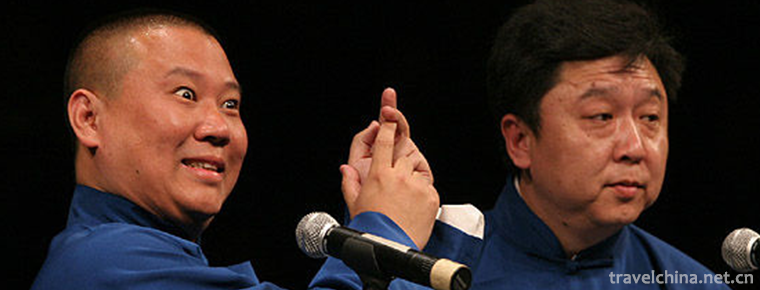
-
Sweet potato porridge
Main ingredients for food ingredients: 250 grams of fresh sweet potato, 150 grams of Japonica rice, a number of red dates, and a proper amount of sesame seeds.
Views: 286 Time 2018-11-02 -
Beijing Hangzhou Grand Canal Museum
The Beijing-Hangzhou Grand Canal Museum of China is located on the south side of the Canal Cultural Plaza in Gongshu District, Hangzhou City, Zhejiang Province, adjacent to the Gongchen Bridge, the te.
Views: 227 Time 2018-12-22 -
Putuo Zong Cheng
Putuo Zongcheng Temple, located in the north of Chengde Summer Resort and south of Shizigou, Hebei Province, covers an area of 220,000 square meters.
Views: 154 Time 2019-02-07 -
Qinhu National Wetland Park
Qinhu National Wetland Park is located between the central part of Jiangsu Province and the Yangtze and Huaihe River. The total area of the scenic spot is 26 square kilometers..
Views: 146 Time 2019-02-07 -
Weihai Dingxiang Ecotourism Resort
Panjin Dingxiang Ecotourism Resort is located in the western suburb of Panjin City. The tourist area is mainly composed of Taiping River scenic belt, Bird Paradise Scenic.
Views: 501 Time 2019-02-22 -
Traditional Marriage Customs of the Han Nationality
The ancestors of the Han nationality believed that dusk was auspicious, so they would marry at dusk. Therefore, the etiquette of marriage was called "dusk rite", which later evolved.
Views: 196 Time 2019-05-02 -
Talking about ancient times
Telling the ancients means telling books and stories. It is a traditional language performing art form in which ancient artists use Quanzhou dialect in Minnan language to re-create and deliver novels .
Views: 301 Time 2019-05-05 -
Hainan opera Qiongju Opera
In June 2008, Qiongju Opera declared by Hainan Qiongju Theatre and Haikou City was listed in the second batch of national intangible cultural heritage list with the approval of the State Council..
Views: 194 Time 2019-06-11 -
Cao Xueqin
Cao Xueqin (about May 28, 1715 - February 12, 1763) Name Stained with Word Dream Ruan No. Xue Qin No. 2, Qin Xi and celery, Chinese classic. The Dream of Red Mansion The author of the book is controve.
Views: 213 Time 2019-09-07 -
China Foreign Affairs University
China Foreign Affairs University is a small scale, high level and distinctive foreign ministry's sole institution directly under the guidance of serving the cause of China's diplomacy and cultivating .
Views: 170 Time 2019-11-29 -
Batang Tuanjie steamed stuffed bun
The Tuanjie steamed bun was not invented by the 18th army when it entered Batang. In the old days, Tuanjie steamed bun, to be exact, was made by Batang ancestors hundreds of years ago. Moreover, it has been handed down to the present day..
Views: 234 Time 2020-12-06 -
Nanchong first industry
In 2019, the sown area of grain crops in Nanchong is 558000 ha, which is 0.15% lower than that in 2018. The sown area of oil crops is 152000 ha, an increase of 1.9% over that in 2018. The vegetable planting area is 154000 hectares, an increase of 3.9% over that in 2018..
Views: 361 Time 2020-12-17


